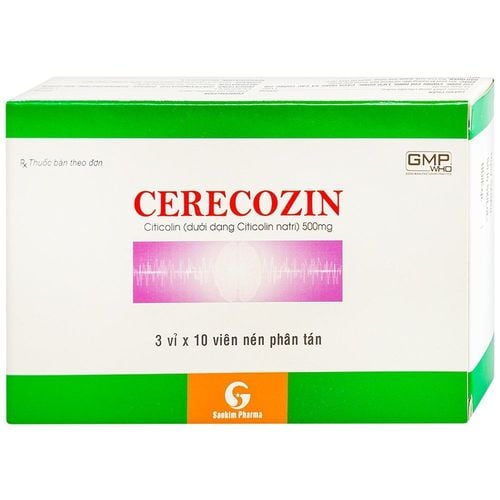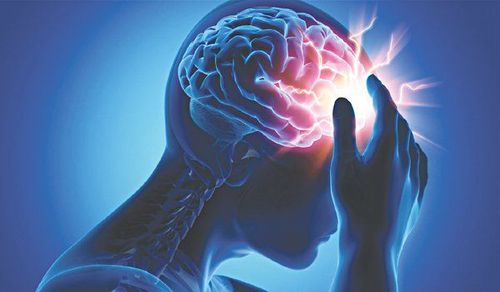This is an automatically translated article.
After an ischemic stroke, the goal of treatment is to restore blood flow to the affected brain area as quickly as possible, i.e. within the first hours after stroke symptoms begin.
1. Stroke overview
Stroke is the term doctors use when part of a person's brain dies because of lack of blood supply or blood flow for too long. During a stroke, 1 or more areas of the brain may be damaged. Depending on the affected area, the person may lose the ability to move one side of the body (hemiplegia) or lose the ability to speak and see normally or some other function.
The consequences of a stroke can be temporary or permanent, and the patient's functioning functions can be partially or completely lost. Long-term complications of a stroke will depend on the extent of brain damage, the speed of treatment during the "golden period" and a number of other factors.
2. Initial treatment of ischemic stroke
After an ischemic stroke, the goal of treatment is to restore blood flow to the affected brain area as quickly as possible, i.e. within the first hours after stroke symptoms begin. The primary treatments for ischemic stroke are:
Thrombolytic therapy: Intravenous injections of the thrombolytic drug alteplase or "tPA" to break up the clot that is blocking blood flow to the brain . Mechanical thrombectomy: In this procedure, a medical professional places a catheter (catheter) into the blocked artery. The clot will be removed using a "stent removal device" or suction to reopen the blocked artery. Both thrombolytic therapy and mechanical thrombectomy should be performed in a hospital with expertise in these areas. Most stroke emergencies require rapid consultation with a neurologist (brain doctor), intensive care unit, and CT or MRI brain and vascular imaging.
2.1. Thrombolytic therapy Thrombolytic therapy uses the fibrinolytic drug alteplase (also known as tissue plasminogen activator or tPA) given intravenously. Alteplase works to dissolve blood clots that are blocking the flow of blood in the arteries to the brain. The effectiveness of this thrombolytic treatment will wear off over several hours. Therefore, the sooner treatment begins after a stroke begins, the greater the chance of success.
One risk with alteplase treatment is cerebral hemorrhage (excessive bleeding in the brain), which can be fatal in some cases. However, this risk is often insignificant compared with the benefits of treatment, provided it is started early enough. Currently, scientists are also studying tenecteplase - a new thrombolytic drug that has several advantages over alteplase.
2.2. Mechanical thrombectomy This procedure can be helpful for people who have a blood clot blocking a large artery in the brain. In it, the doctor inserts a catheter into the artery with a device that can remove the blood clot. This treatment can reduce long-term disability (stroke) caused by a stroke.
Mechanical thrombectomy is beneficial if performed within 6 hours of the onset of stroke symptoms. It can even work up to 24 hours from the start of symptoms in certain situations (depending on results of brain imaging tests). Thrombectomy may be performed along with alteplase therapy. The sooner you get treatment, the better your recovery is likely to be.
Mechanical thrombectomy for stroke patients is a highly specialized treatment and should only be performed in hospitals experienced in the use of stenters.

Hậu quả của đột quỵ do thiếu máu cục bộ có thể là tạm thời hoặc vĩnh viễn
3. Other ischemic stroke treatments
Sometimes certain drugs are also used for early treatment of ischemic stroke, such as:
3.1. Aspirin This is an antiplatelet drug. Platelets are small pieces of cells that circulate in the blood, often clumping together to help stop bleeding/clotting. However, this clumping also leads to blood clot formation. When a person has a stroke, platelets clump together and form blood clots inside the narrowed arteries, blocking blood flow in the brain. In addition to aspirin, other antiplatelet agents (clopidogrel, cilostazol and dipyridamole) may also be prescribed for early treatment of ischemic stroke.
Antiplatelet therapy helps prevent new blood clots from developing. Unlike thrombolytics (alteplase), antiplatelet agents do not dissolve existing blood clots. Aspirin is the only antiplatelet agent that has been shown to be effective in the treatment of early ischemic stroke. The drug is usually used for cases of stroke symptoms within 48 hours but cannot use thrombolytic therapy, or can be used after thrombolytic therapy.
3.2. Anticoagulants Anticoagulants are often referred to as "blood thinners". However, the drug does not actually make the blood thinner, but only slightly reduces clotting. Heparin and low molecular weight heparin are traditional anticoagulants. Newer anticoagulants include:
Dabigatran (brand name: Pradaxa); Apixaban (brand name: Eliquis); Edoxaban (brand names: Savaysa, Lixiana); Rivaroxaban (brand name: Xarelto). These are drugs that act quickly and are now commonly used in place of heparin.
Because of the risk of excessive bleeding, anticoagulants are rarely used to treat patients with acute ischemic stroke. However, anticoagulation therapy with heparin or low molecular weight heparin is used by some clinicians for certain types of stroke. For example, some doctors use anticoagulants as an initial treatment for:
Stroke caused by a blood clot traveling from the heart (called a "cardiac embolism") in people with heart valve disease or heart failure Severe heart A stroke is caused by a tear in the wall of a large artery that supplies blood to the brain. A person's long-term prognosis after a stroke depends on many different factors and can be difficult to predict. Factors that influence outcomes include age, health, location, severity of stroke, and whether there are complications. In general, most people recover within the first three to six months after a stroke and continue to improve in physical and mental function. The treating physician can give a patient's prognosis and provide guidance on how to recover and reduce the risk of complications.
For patients with ischemic stroke, the sooner the treatment, the higher the effectiveness. Magnetic resonance imaging - MRI/MRA is considered a "golden" tool for brain stroke screening. MRI is used to check the condition of most organs in the body, especially valuable in detailed imaging of the brain or spinal nerves. Due to the good contrast and resolution, MRI images allow to detect abnormalities hidden behind bone layers that are difficult to recognize with other imaging methods. MRI can give more accurate results than X-ray techniques (except for DSA angiography) in diagnosing brain diseases, cardiovascular diseases, strokes,... Moreover, the process MRI scans do not cause side effects like X-rays or computed tomography (CT) scans.\
Vinmec International General Hospital currently owns a 3.0 Tesla MRI system equipped with state-of-the-art equipment by GE. Healthcare (USA) with high image quality, allows comprehensive assessment, does not miss the injury but reduces the time taken to take pictures. Silent technology helps to reduce noise, create comfort and reduce stress for the client during the shooting process, resulting in better image quality and shorter imaging time. With the state-of-the-art MRI system With the application of modern methods of cerebral vascular intervention, a team of experienced and well-trained neurologists and radiologists, Vinmec is a prestigious address for stroke risk screening and screening. reliable goods.
In the past time, Vinmec has successfully treated and treated many stroke cases in time, leaving no sequelae: saving the life of a patient suffering from 2 consecutive strokes; Responding to foreign female tourists to escape the "death door" of a stroke;...
Please dial HOTLINE for more information or register for an appointment HERE. Download MyVinmec app to make appointments faster and to manage your bookings easily.
Reference source: update.com












